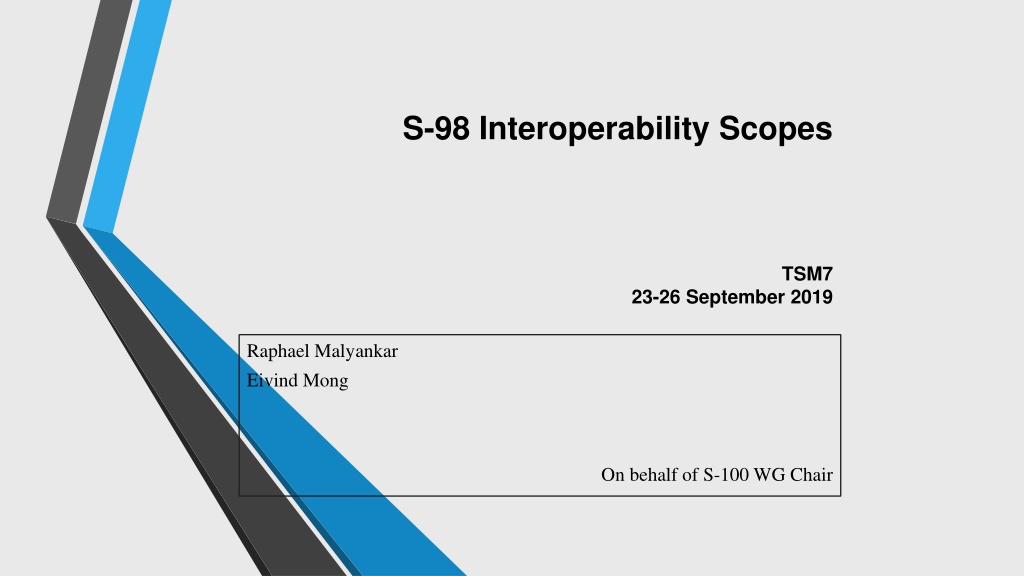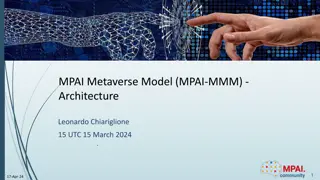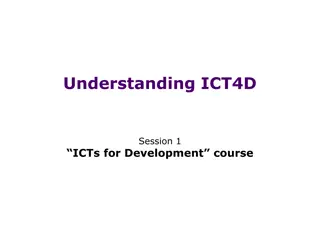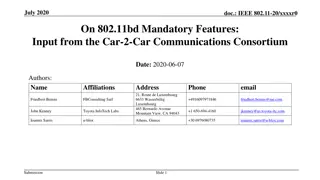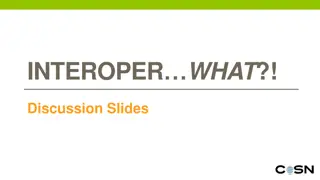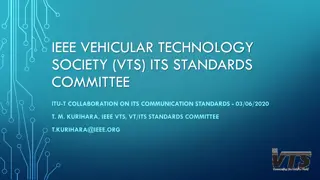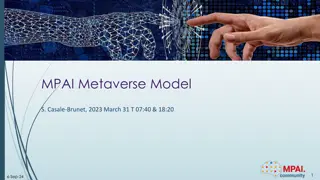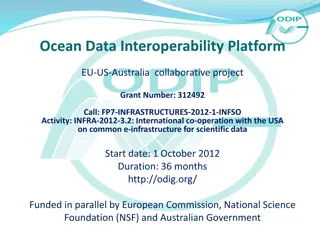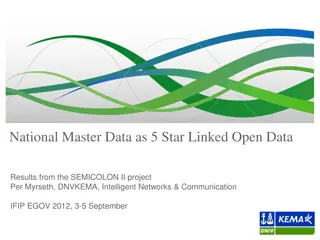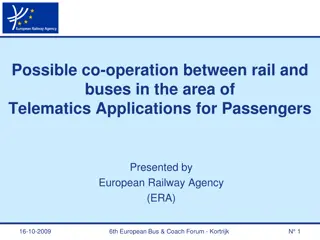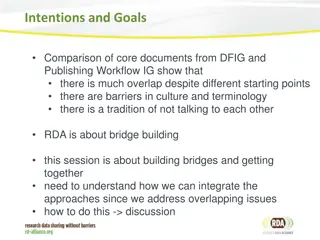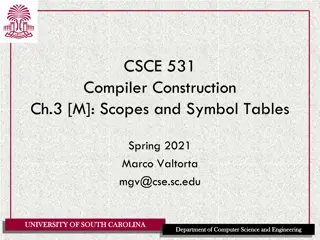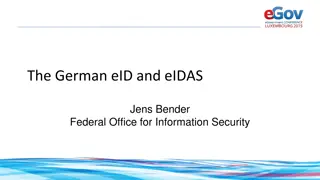S-98 Interoperability Scopes Overview
This paper discusses options for defining interoperability scopes, restructuring the draft S-98 interoperability specification, and assessing the implications of implementing different levels of interoperability. It suggests a phased introduction with pauses for evaluation, focusing on lower complexity levels initially. Various options for moving abstract interoperability concepts into S-100 are explored, including separating the interoperability specification into different levels and transforming it into a guideline. The document also considers the importance of interoperability levels, ranging from basic feature manipulation to complex spatial operations.
Download Presentation

Please find below an Image/Link to download the presentation.
The content on the website is provided AS IS for your information and personal use only. It may not be sold, licensed, or shared on other websites without obtaining consent from the author. Download presentation by click this link. If you encounter any issues during the download, it is possible that the publisher has removed the file from their server.
E N D
Presentation Transcript
S-98 Interoperability Scopes TSM7 23-26 September 2019 Raphael Malyankar Eivind Mong On behalf of S-100 WG Chair
Overview This paper covers: Options for defining interoperability scopes. Re-structuring the draft S-98 interoperability specification, including the possible transfer of abstract interoperability concepts into S-100 5.0.0. An assessment of the implications of implementing only Level 1 interoperability. Purpose: Facilitate a limited and phased introduction of interoperability, with pauses between phases for evaluation. This paper addresses concerns expressed at HSSC 11 and elsewhere: How will interoperability work in practice? Implementation should be phased. Initial efforts should concentrate on the lower, less complex interoperability levels. 2
Interoperability Levels Level 0: No interoperability processing just overlays, as now. Level 1: Interoperability Catalogue (IC) specifies (modifies) the interleaving of feature types compared to the ordering in the PS Portrayal Catalogues. Level 2: Type suppression + filtering + Predefined Combinations (PDCs): Suppression of all features of a specified feature type in one product by a feature type from a different product. Filtering by attribute values and spatial type (point/curve/surface/coverage). PDCs are sets of data products to which a specific collection of interoperability rules apply. PDCs allow customization of interoperability for different sets of data products. Level 3: Feature hybridization enhancement or combination of thematic attributes of coincident features from different products. E.g., re-calculation of numeric attribute values, or adding listed values to an enumeration attribute. Level 4: Spatially-aware interoperability. Complex spatial operations for determining whether features interact, combine feature geometry, etc. 3
Options for S-98 1. Move abstract interoperability concepts into S-100. Retain S-98 as an implementation specification. 2. Use specification scopes (defined in S-100 Part 11) to separate interoperability levels (one S-98 document or Part, with 4 scopes). 3. Divide the interoperability specification into separate documents (or Parts) for separate levels. 4. Add a scope conformance clause with a table specifying which clauses (or Parts) of the revised S-98 belong in each scope. 5. Move Levels 3 & 4 into an informative document. 6. Prepare supporting documents: (a) Functional overview; (b) Implementation roadmap. 7. Change the interoperability specification into a guideline & leave technical details to OEMs. The options are not all mutually exclusive. 4
Option 1 separate abstract interoperability concepts and implementation Split S-98 and absorb the abstract specification and mechanisms into a new part of S-100 S-98 itself could be a multipart implementation. Allows S-98 to become a specification which contains the guidance to tie together various parts of ECDIS (front-of-bridge) operation. Current elements that are contained within S-52 required for ECDIS do not have a home within the S-100 framework. For example, status report, portrayal framework, loading/unloading (this is in S-101), messages, and others. These elements make up part of the operation of the ECDIS (in the S- 57 context) and facilitate the use of the ENC data for navigation while not necessarily being concerned purely with its display. 5
Option 3 Distinct Parts for each level Reorganize the interoperability specification as Parts A-D. Each Part contains all the information for a single level in a one compartment, including fragments of the UML model, XML schemas, interoperability portrayal rules, etc. Both abstract concepts and implementation could be (separately) sub-divided. Compartments provide identifiable references for interoperability levels. E.g., a hypothetical IEC ????? or IMO MSC ??? can specify interoperability L1+L2 by saying Implement S-98 Parts A and B. (or S-100 Parts 16A & 16B). 7
Recommendations Decide if abstract interoperability concepts should be converted into a new S-100 Part 16(?) which contains the guidance to tie together various parts of ECDIS (front-of-bridge) operation. Introduce specification scopes and clear documentary separation of content that describes each level (i.e., different Parts for each level, whether in one Word document or multiple documents). Prepare Functional Overview and Implementation Roadmap as supplementary documents. Add attributes to S-100 metadata to indicate the specification scopes to which a dataset or catalogue conforms. 13
